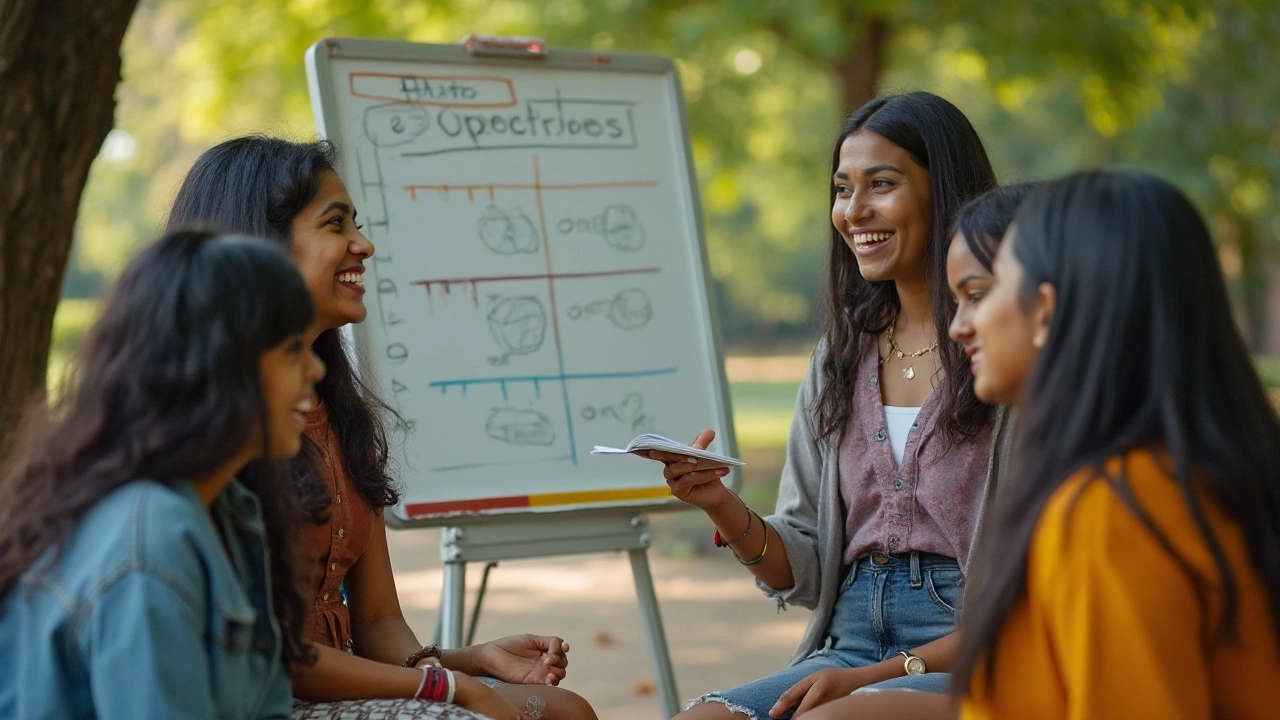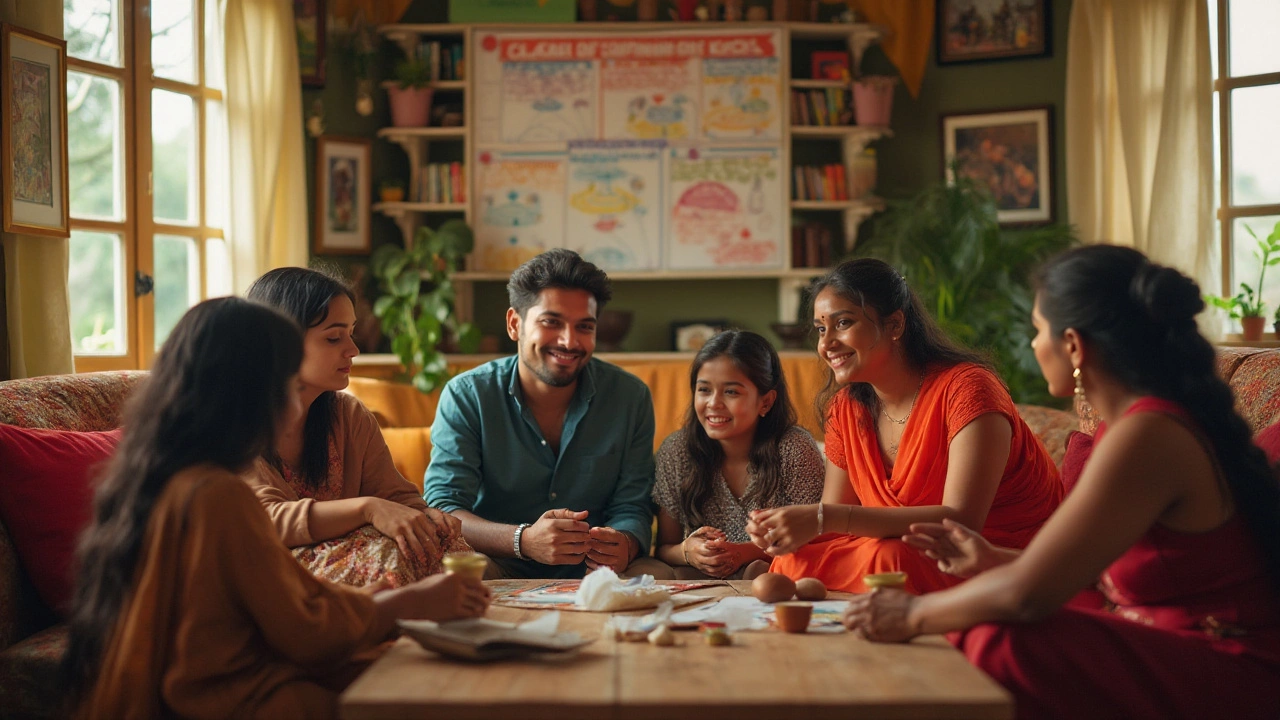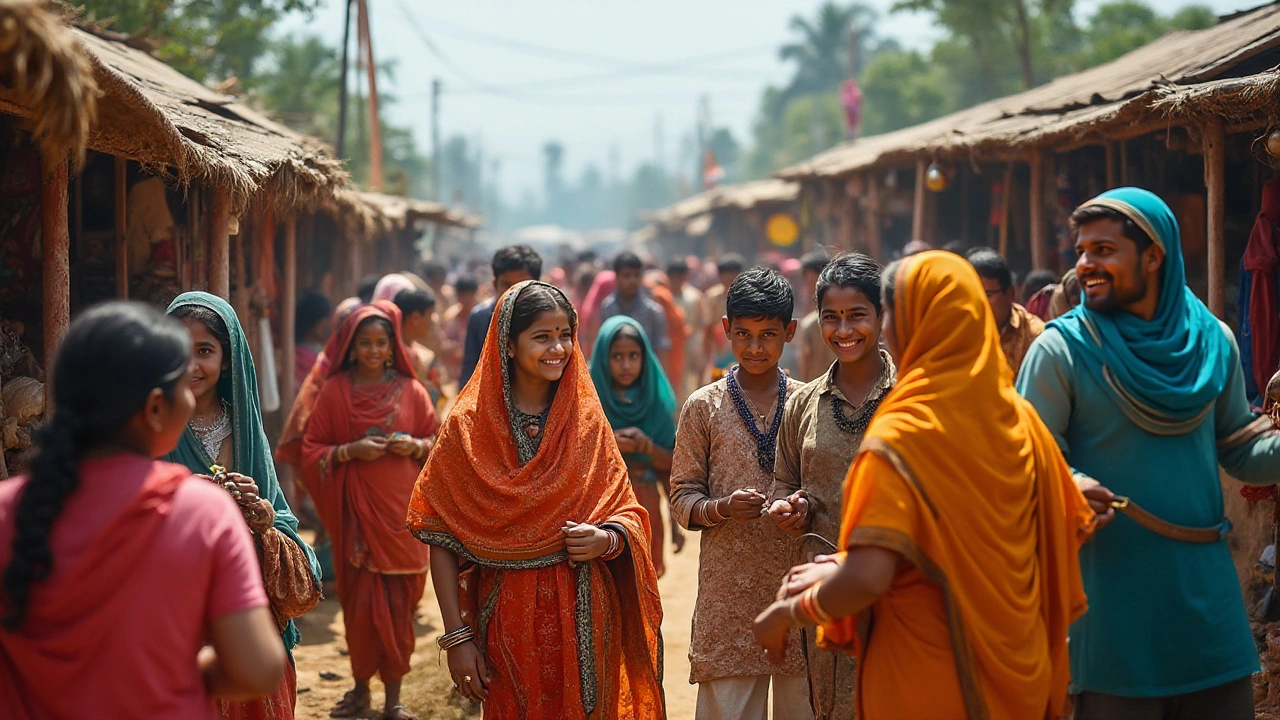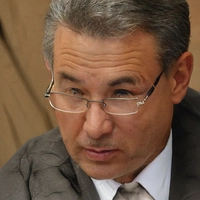Planning a community outreach activity can be an enriching endeavor, opening up avenues for connections and positive impact. Before jumping in, it's crucial to lay a solid foundation by understanding the core aims of your initiative. Whether the goal is to raise awareness, provide service, or simply create a platform for dialogue, clarity from the outset sets the stage for a coherent strategy.
Another cornerstone of successful outreach is knowing your audience. Take time to research and engage with the people you aim to serve or connect with. Their needs, preferences, and expectations will shape your approach and increase the likelihood of a meaningful experience.
Organizing outreach requires meticulous planning, where a well-outlined timeline becomes your roadmap. Set milestones, anticipate challenges, and remain flexible to adapt as necessary. This preparation ensures your event unfolds smoothly and aligns with your vision.
Resource allocation, be it time, finances, or manpower, plays a pivotal role in bringing your outreach plan to life. Evaluate what you have on hand and what you might need to source externally. Efficiency here can make or break the feasibility of your event.
Finally, never underestimate the power of community engagement. Think beyond the event and consider long-term relationships and trust. Invite participation, respond to feedback, and stay open to new ideas, all of which enrich the experience and amplify your outreach's impact.
- Setting Clear Objectives
- Understanding Your Audience
- Creating a Practical Timeline
- Allocating Resources Effectively
- Fostering Community Engagement
Setting Clear Objectives
Setting clear objectives is a fundamental step when planning a community outreach activity. It's not just about having a vague sense of purpose, but a well-defined road map that guides every decision throughout the planning process. Begin by asking yourself what you hope to achieve with your effort. Are you aiming to spread awareness about a critical social issue, provide much-needed services, or perhaps bring a community closer together? These broad goals need to be broken down into specific, measurable, achievable, relevant, and time-bound (SMART) objectives to give your plan a focused direction.
Glean insights from successful examples in your chosen field. According to a study by the Stanford Social Innovation Review, clearly defined objectives not only motivate organizers but also empower attendees to engage more effectively. When an attendee knows exactly what they stand to gain or contribute, their participation becomes more meaningful. This insight is backed by data indicating that events with specific goals see 20% higher engagement rates than their counterparts with less clarity.
"Setting crystal clear objectives is like carving a pathway through the forest for your ideas to walk upon," says renowned community planner David Kaplan.
Once objectives are established, the next step is ensuring that every team member and stakeholder understands them. A shared vision fosters collective effort, encouraging initiative and innovation amongst the group. This is where tools like vision boards and regular update meetings can come in handy. Use these platforms to adjust goals if necessary and keep the momentum on track, avoiding potential scope creeps or diversion from the main course. Communicating objectives clearly across teams also ensures that resources are allocated in line with ambitions, thus enhancing efficiency and impact.
To cultivate a deeper connection with your audience during outreach, consider aligning your objectives with their specific needs and aspirations. Conduct preliminary surveys or small focus group discussions to capture on-ground sentiments. This strategic alignment can spark greater interest and participation, as people are naturally drawn to causes resonating with their values and circumstances. By tapping into these insights early on, you bolster the relevance and urgency of your outreach in the community's eyes, transforming passive recipients into active partners.
Motivation is another significant factor tied closely to objective clarity. Team members, volunteers, and even sponsors are more likely to invest their enthusiasm and resources when a clear purpose is communicated. It’s easier to rally support and maintain enthusiasm when everyone knows precisely what success looks like. Establish objective markers and celebrate small victories; these not only keep spirits high but also serve as navigational beacons guiding your outreach's trajectory over time. Leveraging these motivational drives can especially energize efforts without the need for excessive resource expenditure, providing an economical boost to morale and progress.
Understanding Your Audience
At the heart of any successful community outreach lies a keen understanding of the people you're hoping to reach. Your audience isn't just a homogeneous group; it's a tapestry of diverse backgrounds, aspirations, and challenges. Diving deep into this complexity not only informs your approach but also enhances your ability to craft event planning that resonates emotionally and intellectually. Start by conducting thorough research: gather demographic information, such as age, cultural backgrounds, and socio-economic conditions. Merging these insights with qualitative data like personal stories from potential attendees affords you a more nuanced perspective. This isn't just an exercise in data collection; it's about painting a fuller portrait of who your community really is and what they genuinely value.
Engaging in direct dialogues is an invaluable technique when attempting to discern audience needs. Organizing focus groups or feedback sessions prior to your event invites real-world voices into your planning process. Such interactions not only illuminate specific concerns and desires but also foster a sense of partnership, turning passive recipients into active participants. These communal insights serve as your compass, guiding decisions from theme selection to the types of activities that might engage your audience most. As Judith Rodin, a former president of the Rockefeller Foundation, observed,
"Embracing those you seek to help as equal partners in pursuit of a common goal makes empowerment possible."
Once you've gathered your insights, consider categorizing them within a simple framework. Key segments could include needs, cultural nuances, barriers, and expectations. Visualizing your findings in a structured way allows your team to spot trends and contradictions more easily, providing a better vantage point for planning. For instance, if statistical data suggests that a considerable portion of your prospective audience struggles with transportation, you'll need to strategize ways to either facilitate access to your event or adapt the event to be more accessible. This data-informed strategy isn't just about troubleshooting; it's a proactive step towards genuine inclusivity, ensuring that the beauty of your event draws from the strength and voices of those it aims to serve.
Finally, technology and social media platforms offer additional avenues for tapping into audience insights. Analyzing online behaviors, such as the types of content they've previously engaged with or the social issues they've rallied around, can provide rich layers of context. This virtual footprint is a treasure trove, offering clues about how your outreach can intersect organically with their lives. Leveraging this information requires a delicate balance; there is a fine line between engagement and intrusion. Thus, authenticity in your approach is key, ensuring that your strategies remain respectful and aligned with the broader aim of enacting positive social engagement.

Creating a Practical Timeline
Developing an effective timeline is a keystone of successful community outreach planning. It acts as a guiding star, helping you stay on track and ensuring that no detail is overlooked. Start by setting a date for your event. This might seem straightforward, but consider factors such as holidays, community events, and the best season for your purposes. A well-chosen date can significantly increase participant engagement. From there, work backward to allocate time for each stage of planning—think of this as creating a chain reaction where one step triggers the next.
A crucial element is setting deadlines for each task. Break down the outreach into manageable chunks, each with a clear due date. For instance, if you're aiming for a summer event, begin your major planning in early spring. Assign tasks like venue booking, volunteer recruitment, and promotional activities with ample lead time. According to a study by Eventbrite, events planned over a 4–6 month span tend to have better outcomes due to room for unforeseen adjustments.
Including milestones within your timeline provides markers for progress checks. These serve as moments to evaluate what has been accomplished and assess remaining tasks. Regular check-ins foster accountability and make it easier to catch issues early. It's beneficial to overestimate the time needed for some tasks to keep stress levels down and performance up. Additionally, creating a buffer for last-minute challenges can save the day when surprises pop up. Recognize that flexibility is your ally in any outreach endeavor, allowing for a dynamic response to inevitable changes.
"For every minute spent organizing, an hour is earned." — Benjamin Franklin
Don't forget to build a communication strategy into your timeline. Allocate time for updates and engagement with your audience. When will you begin teaser campaigns? How often will you update volunteers or stakeholders? Being proactive about communication not only fosters excitement but also inspires confidence among participants. Incorporating technology can ease these efforts; tools like Trello or Asana can provide digital timelines that integrate task reminders and status updates, keeping everyone on the same page.
Consider this staggering statistic: a properly designed timeline can reduce project stressors by up to 40%, according to data from the Project Management Institute. Reflect on this as you draft your schedule, layering in contingency plans and end-of-project evaluations. Each tick of the clock becomes less daunting when you’ve orchestrated it with thought and care. A meticulously crafted timeline is not just a plan chart—it's the backbone of your community outreach success story.
Allocating Resources Effectively
In the realm of planning community outreach activities, the question of resource allocation looms large as an essential determinant of success. This is not merely about dispersing materials or funds but rather orchestrating assets in a manner that definitively enhances the impact and reach of your event. Thoughtful allocation begins with a meticulous audit of what is at your disposal—be it human capital, financial backing, or material supplies—and aligns these with your stated objectives.
The first step involves designing a comprehensive inventory, tabulating all resources currently on hand and projecting potential needs. For example, if your outreach activity involves a large-scale community health fair, you might enumerate medical supplies, volunteer aids, informational brochures, and technological devices. The critical point here is to prevent any surprises that might derail the outreach goals, especially concerning the limitations of time—a resource that is as precious as any currency.
Financial resources often take center stage in this conversation. Crafting a budget that is logically aligned with your outreach needs allows for flexibility without sacrificing accountability. When preparing a budget, factor in the cost of venues, equipment, and personnel. While it can be tempting to undercut expenses at the planning stage, remember that investing in quality—such as skilled facilitators or robust infrastructure—often pays dividends in terms of outreach effectiveness and community engagement.
Adroit management of human resources cannot be overstated. Volunteers and facilitators are the backbone of any community effort, often bringing enthusiasm and specialized skills that galvanize activities. Their engagement should be tailored to foster a sense of ownership and commitment. Structured training sessions, clear roles and responsibilities, and meaningful incentives can significantly enhance volunteer contributions. Nothing beats a motivated team in converting planned objectives into actionable realities.
Apart from the tangible resources, consider the auxiliary resources such as technology and media. In today's digital age, leveraging platforms like social media for marketing and feedback can amplify outreach efforts manifold. Whether it's using Facebook and Instagram for event promotions or deploying Zoom for virtual interactions, technology introduces a cost-effective dynamic to engage a wider audience. Regular assessment and integration of innovative tools can serve as game-changers in maximizing your event's reach and efficacy.
"The best use of imagination is creativity. The worst use of imagination is anxiety," remarked Deepak Chopra, emphasizing the transformative potential of resourceful thinking.
On occasion, community outreach may benefit from alliances with local organizations or stakeholders who share a vested interest in similar community goals. Such partnerships can infuse additional resources (like funding or expertise) into your activity, granting it greater scale and scope. Mapping out these potential synergies often reveals untapped avenues of support and collaboration.
Finally, establishing a feedback mechanism for post-event analysis is invaluable. By soliciting input from participants and volunteers, you can glean insights into resource gaps or areas for improvement. These reflections serve as a compass for future activities, ensuring a continuously refined approach to resource allocation in community outreach initiatives.

Fostering Community Engagement
Building strong community engagement forms the heart of any successful outreach activity. Achieving this involves creating meaningful interactions that resonate with the community members on multiple levels. It's about listening, responding, and valuing the diverse voices that make up your audience. A vibrant engagement strategy not only bolsters trust but also lays the groundwork for future collaboration, turning one-time participants into lifelong advocates and allies. Starting with an open dialogue, it's key to invite feedback from the community. Whether through surveys, focus groups, or informal conversations, understanding the community's perceptions and expectations can help direct your efforts more effectively. By incorporating their ideas into your planning, you create a shared sense of purpose and agency that is essential for deeper involvement.
Engagement should be a two-way street. Providing platforms for community members to contribute actively strengthens their connection to the activity. This can be achieved by offering volunteer opportunities or by asking them to take part in decision-making processes. Utilising social media tools can also be immensely beneficial, allowing for real-time communication and fostering a larger sense of community. Crafting content that is relatable and adaptable across various digital platforms ensures broader reach and more inclusive participation.
According to a study by the Stanford Social Innovation Review, activities that embrace mutual learning and lead to tangible outcomes are more likely to maintain engagement over the long haul. In this spirit, consider organizing workshops or training sessions that equip people with skills or knowledge related to your outreach themes. When participants feel they are gaining something worthwhile, their commitment naturally deepens. Remember, sustaining community engagement requires ongoing effort and dedication. Noted community organizer Grace Lee Boggs once said,
"You cannot change any society unless you take responsibility for it, unless you see yourself as belonging to it and responsible for changing it."Her words underline the importance of collective responsibility and empowerment in any engagement strategy. As your community outreach evolves, continually reassess methods, listen actively to feedback, and be ready to innovate. The journey of fostering engagement is a dynamic process, one where the ultimate goal is growth and connection that benefits all involved.





